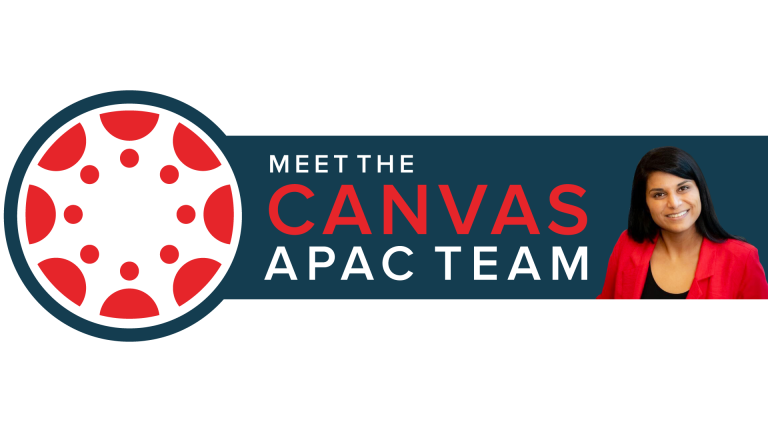
In brief:
- By leveraging data insights through its Canvas LMS, Griffith University is sharpening teaching practices and boosting student engagement and retention.
- Canvas Data, Live Events, and Impact are the three key Canvas tools that the university uses to help visualise, interpret, and action data meaningfully.
- Impact allows the university to monitor Canvas and third-party tools for a “very granular look” at how they’re quantifying a return on investment.
For Griffith University, the Canvas learning management system (LMS) is proving to be a treasure trove of data visualisations, insights, and predictive analytics, helping to sharpen teaching practices and boost student engagement and retention.
The Queensland-based university has 4,000 staff and 50,000 students across six campuses. Established in 1975, the university consistently ranks in the globe’s top 2 percent for research impact. It’s renowned for exceptional student support and a strong commitment to social justice.
Griffith University’s Team Lead and Senior Functional Analyst, Alan Bond, shared at CanvasConnect 2023 how the university uses Canvas Data 2, Live Events, and Impact. Bond’s approach can help other universities and registered training organisations navigate the many offerings of the Canvas LMS. It can also act as a guide for the many plug-ins available.
Canvas Data: understanding student activity
Canvas Data offers a range of functionalities to analyse student behaviour within Canvas. Here are the main three that Griffith University uses:
- Canvas Data 2: This caters to institutions seeking to extract historical data for long-term trend analysis or monitor student interactions within the platform. The extracted data can be formatted in various ways, including CSV, JSON, TSV, and Parquet, an Apache-developed format optimised for high-efficiency modelling, such as Hadoop.
- Live Events: To focus on real-time updates, notifications rather than visualisations. Instructors can choose from 60 specific actions, like assignment submissions and login events to be notified about them instantly. This allows for immediate interventions if needed, such as analysing suspicious login activity for security purposes.
- Impact: Used mainly within the Canvas interface, this monitors user interactions with various Canvas features. Impact, formerly known as easySoft, offers instructors valuable insights into how students are using the LMS. Additionally, Impact allows instructors to create targeted messages and support materials based on this usage data.
Canvas Data 2 offerings
Using Canvas Data 2, the university has streamlined bulk access to low-latency data to enable data warehouses and learning analytics. Canvas Data 2 is a suite of services and technologies allowing institutions to download their LMS data in bulk and keep it up to date so they can meet their unique needs to:
- Conduct research
- Build custom reports
- Create dashboards
- Construct tools
Typically, it’s used for transaction and operation data as well as bulk transfers. Over 90 unique datasets, or tables, are on offer. Griffith finds Canvas Data 2 useful for business intelligence reporting, retention models, aggregating data sources from adjacent systems, and creating visualisations.
Greg Faller, Instructure’s Director of Solutions Engineering for APAC, also talked about a recently added feature that allows Canvas customers to generate keys specifically for partner access to Canvas Data 2. That means an account admin can send a key directly to partners for them to securely access the 90 datasets of Canvas LMS information.
Live Events on show
Canvas notifies admins of specific events when an “interesting” action takes place. This might be when a page is accessed, a student hands in an assignment, or there are updates to a course setting. Using either an AWS SQS queue or an HTTPS Webhook, institutions can subscribe to specific events.
Live Events are best for analytics and data collection applications, including:
- Assessment or quiz submissions
- User sessions by frequency, duration, type, patterns, typical time of usage, paths taken to reach the specific content
- Course assignments and submissions, for insights into the relationship between students and their assignments
- Course content changes and reviews
Partners, such as Atomic Jolt, are also able to leverage Live Events to enhance their applications and the speed in which they receive updated information from Canvas.
Atomic Jolt is a global search tool, a plug-in that indexes Canvas content to leverage more powerful searching. At the CanvasConnect session, Faller explained more.
“Atomic Jolt allows global searching of your Canvas environment. So, students, teachers or other staff can type in a search term for a return of all resources and activities that relate to that term,” he said.
“With Live Events and Atomic Search, they’re notified every time content is updated or added into the Canvas environment so they can recreate your search results. That means you don’t have to go in there and rebuild your index manually. Atomic search can trigger that rebuild on your behalf.”
Faller also talked about a recently added feature that allows Canvas customers to generate keys specifically for partner access to Canvas Data 2. That means an account admin can send a key directly to partners for them to securely access the 90 datasets of Canvas LMS information.
Griffith University's use of Impact for student engagement
The university has used Impact since early 2023 to monitor Canvas and third-party tools, such as Canvas Studio and Canvas Commons for a close look at how those tools are being used in the environment, Faller said. This helps IT teams justify the return on investment. Institutions can aggregate the data to create visualisations to embed into Canvas for academic teams or students to view.
Generally, institutions use Impact to boost technology adoption and evaluate the impact of educational technology. The tool also increases options for support, particularly through targeted communications or interventions. This 10-minute demo video explains how to use it to boost user engagement.
Here’s how the university implemented Impact to enhance student onboarding and engagement with the Canvas LMS:
- Create walkthroughs and pop-up messages: When students land on the homepage for the first time, they won’t have to take numerous clicks; they’ll watch a walkthrough video instead.
- Deliver targeted hints and pop-ups: These tips on specific Canvas functions are used to make the experience easier for students. For instance, pop-ups were used to explain how to access marks and course announcements.
- Impact reports and surveys: While the university mainly uses Google Analytics for active user monitoring, Impact’s reporting features give insights into how tools are used within Canvas. The university also leveraged Impact messages to target student surveys.
- Data-driven improvement: Using data from Impact, the institution identified areas where students faced difficulties. For example, Impact insights prompted the university to streamline the assignment submission process by eliminating the need for separate cover sheets. For students expecting one, they hover over the submit button and a pop-up message tells them cover sheets are no longer needed.
Impact can monitor third-party tools and “do a very granular look at how they’re being used in your organisation,” said Bond.
“For example, with Impact messages, you can target a certain part of the page, or a certain page. You can also target students or staff or different roles. We decided to target trimester three students, anyone with an active course on their dashboard, although we don’t usually do surveys this way. It was the first time we did it like this and the feedback was quite good,” Bond said.
“You’re able to see how frequently that message was being deployed by viewing ‘clicked on via Impact.’ That data is quite useful as it shows the number of years, individual students, and click throughs to the survey.”
Institutions can drill down into categories of collaboration, content access, utilisation rates, and filters that allow them to view data through segments like sub accounts, student roll, date, and range.
An example of Impact in action was when university leaders wanted an early dashboard showing student demographics, their enrolment, digital experience, retention, and student engagement within the Canvas platform.
“From a university level, they have as much information as they need to help with their retention numbers,” Bond said. “Operationally, we’re using the insight to improve the system. It prompted us to add a teams’ cover help box that drastically reduced the number of boxes [in the survey] from 100 to less than 50. We use these insights to see where the issues are, so, if appropriate, we add a box to help users.”
This has helped reduce the complexity of the user interface, he said.
Dealing with institutional and academic staff wish lists
Bond explained how Griffith University handles academic staff requests for add-ons or external tools.
“We have a follow-up procedure in place. We consider what they’re suggesting and analyse it to see if it’s worth it or if Canvas can already do something similar. Just say we decide to invest in the tool, if it goes into multiple monitors, we’ll track the usage and if it’s good, we’ll agree to expand it.”
Canvas offers a powerful set of tools for instructors and institutions to understand student activity within the LMS. By leveraging the information, educators can gain valuable insights to improve student engagement and the overall learning experience. Griffith University's successful use of Canvas Data 2, Live Events, and Impact demonstrates how these tools can be implemented to enhance student onboarding and address specific student needs within the LMS.
You can find out more about Griffith University’s three-pronged approach from the CanvasConnect slides titled “Data, Insights and the Instructure Learning Platform.”
Related Content
 new_and_next_webinar.png
new_and_next_webinar.pngBlogs
 meet-canvas-apac-team-farrah.png
meet-canvas-apac-team-farrah.pngBlogs
 instructure_2022-may_cofi-273.jpeg
instructure_2022-may_cofi-273.jpegBlogs